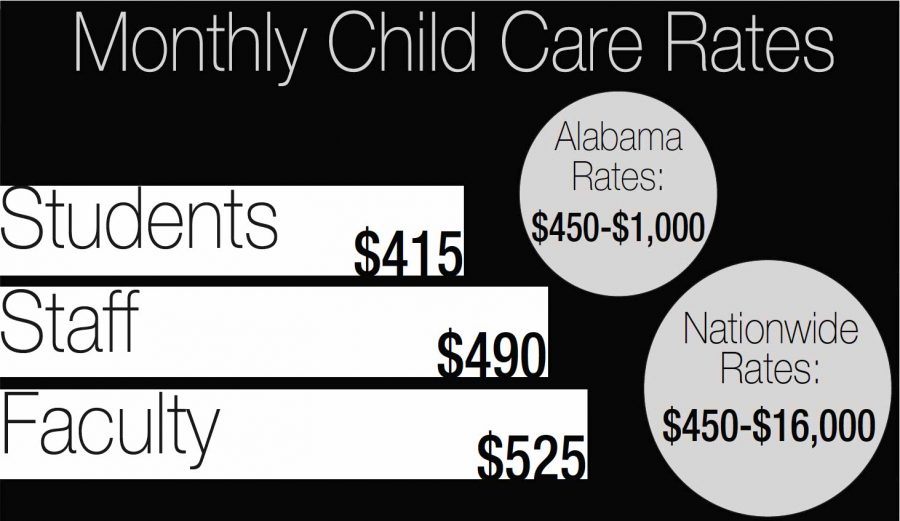UA faculty, staff members and students who are the parents of a child between the ages of 2 months and 5 years have various options for child care services in Tuscaloosa. While some might use the child care resources of the Tuscaloosa community, others can instead send their child to the UA Child Development Resources’ competitive Children’s Program.
Robin Hollingsworth, director of the Children’s Program, said nearly all of the 114 children enrolled in the nationally accredited child development center are children of UA students, faculty and staff members who receive a discount from the regular rates for the public.
The program accepts around 30 new children, usually at the pre-school level, each year but cannot meet the needs of all UA affiliates and their children, Hollingsworth said.
“I do know that child care availability has been a concern of both the Faculty Senate and the professional staff association, as well as SGA for some time now,” Hollingsworth said. “I also know how disappointing it can be for families to know that a high-quality program exist on their campus and they cannot get in.”
(See also “Sitters for Service uses volunteers to help parents“)
Hollingsworth said the program has existed since the mid-1930s, when it was a half-day program behind Rose Administration Building. Nine years ago, it moved into its current facilities and now operates as a full-day, year-round program.
Sally Edwards, director of Child Development Resources, said the program has several functions and goals – two of which are as an instructional program for students and as a research opportunity for students and faculty.
As a result of that, Edwards said, filling an opening is more competitive than simply pulling a student from the top of the waitlist.
“We’re going to look at a number of things whenever we have an opening,” Edwards said. “We’re also looking at balancing ages within a classroom. You want to make sure you’ve got them across that developmental span. We’re looking at the age of a child, we’re looking at the sex of a child. We certainly have various ethnic and racial groups represented, and that’s important, because that’s again a microcosm of what our diverse campus looks like.”
The program’s National Association for the Education of Young Children certification signifies lower child-to-staff ratios and higher staff qualifications and credentials than one would typically find in a children’s program, she said.
(See also “Bottles and books: students balance parenthood, school“)
“That’s a very rigorous standard to meet in terms of becoming an accredited program,” Edwards said. “Of course, the program exists to have an exceptionally high quality program for children.”
Though the center is unable to provide care for all children of faculty, staff and students, Edwards said other high-quality local programs exist in the community, including one in the process of an expansion that will lead to NAEYC certification.
On campus, however, faculty members have been looking into the possibility of increasing in-house resources. Rona Donahoe, secretary of the Faculty Senate, said the Faculty Life Committee of the Faculty Senate met with the CDRC director, Dean Milla Boschung and Provost Joe Benson to investigate possible expansion of on-campus resources, though those co-chairs are no longer serving on the Faculty Senate.
“I am the chair of the ad hoc Child care Subcommittee of the Faculty & Staff Benefits Committee, which conducted the recent child care/elder care survey of faculty, staff and students,” Donahoe said. “We are in the very preliminary stages of assessing the level of need for child care and elder care assistance among University employees and students. It will be several weeks before the survey results can be analyzed and the results used to make recommendations to the full Committee.”
In the meantime, both Hollingsworth and Edwards said they completed the survey.
“I would personally love to see more high-quality, accredited child care programs available in our community and available for UA families,” Hollingsworth said.
(See also “Alabama faces a crisis of health care access“)









